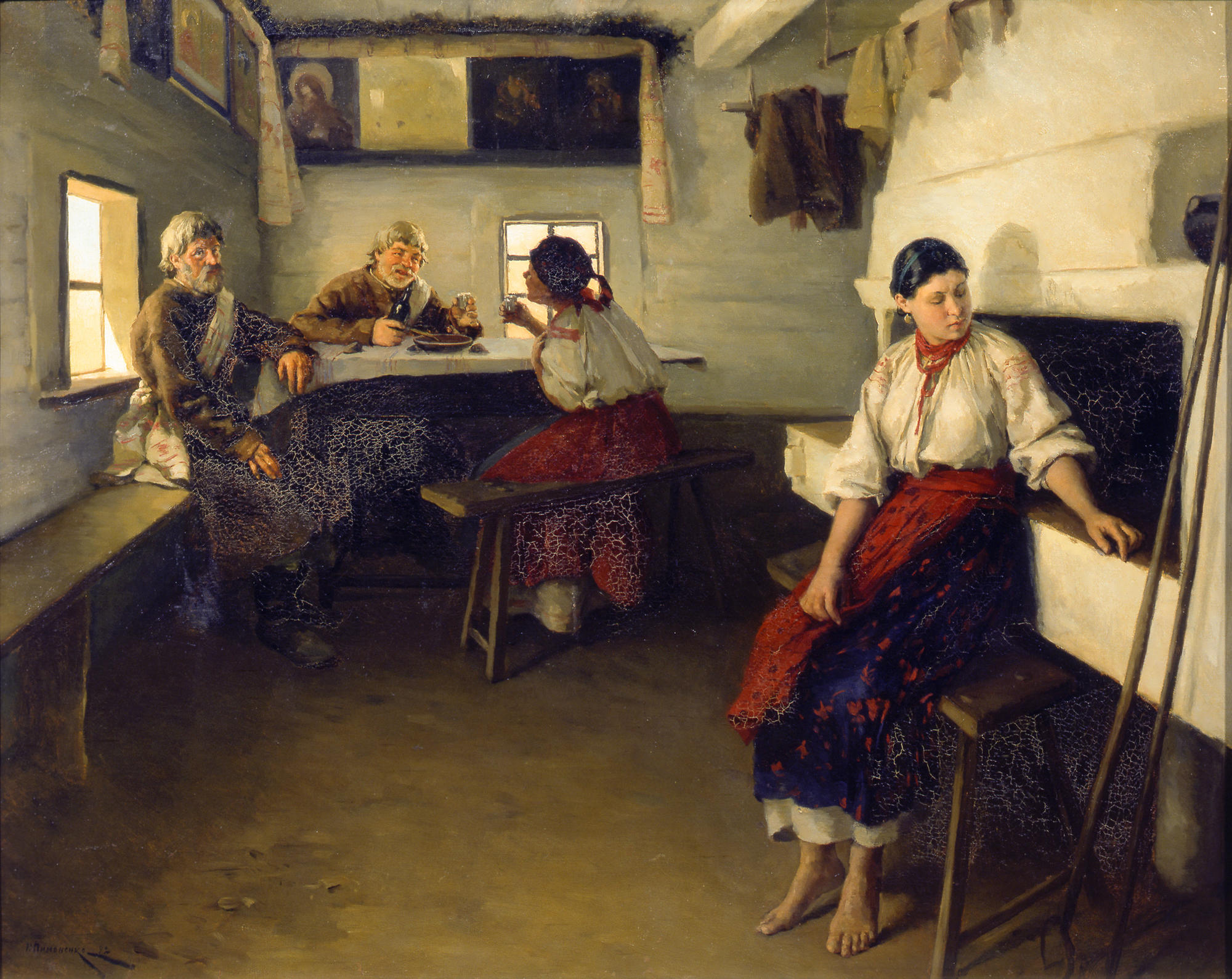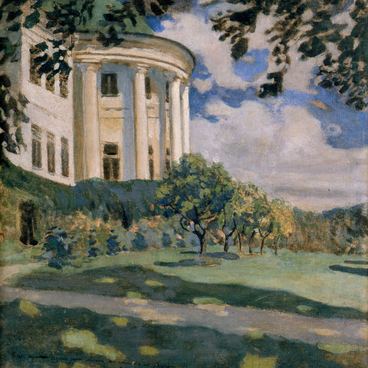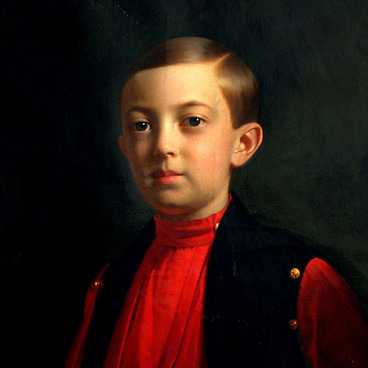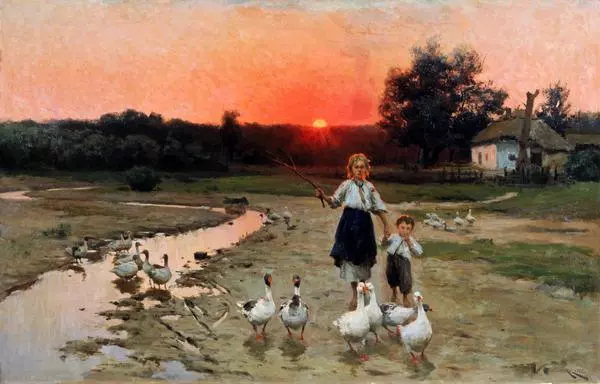Nikolay Pimonenko was born in Kiev and received his primary art education at the Kiev drawing school of Nikolai Murashko. From 1882 to 1884, the artist studied at the Pedagogical courses of the St. Petersburg Academy of Arts.
However, Pimonenko wasn’t able to finish the courses due to health problems. With a small and a large commendation medals and a certificate of a drawing teacher, he returned to Kiev where he taught at two educational institutions: the Kiev school of drawing and the Kiev art school.
In 1885-1887, Nikolay Pimonenko was looking for his own theme and took an active part in artistic life: his paintings After the Auction, On Vacation and others appeared at academic exhibitions. From the late 1880s, he settled on the depiction of Ukrainian village life.
From 1886 to 1889, Pimonenko painted a number of paintings with everyday scenes filled with moments from life of simple folk. An interest in the traditions and everyday life of rural residents was also evident in the works’ titles: Asked in marriage, On Clean Thursday, Separated, Christmas fortune telling, Afanasy Ivanovich and Khavronya Nikiforovna.
Christmas fortune telling brought great success to the master. The painting was exhibited at the academic exhibition in 1888. Critics praised the canvas.
In 1891, the artist received the title of honorary free associate of the Academy of Arts for his paintings Wedding in Kiev Province and The Morning of the Resurrection, and in 1904 he was awarded the title of academician.
Nikolay Pimonenko participated in international exhibitions in Berlin, Paris, London and Munich. In 1909, he was awarded a gold medal at the Salon de Paris of the Society of French Artists for his painting Gopak. The painting, which was a great success, was acquired by the Louvre.
The painting depicts a traditional custom of matchmaking. Pimonenko was well acquainted with the Russian-Ukrainian way of life and was well versed in icon painting. His father was engaged in wood carving and owned an icon-painting shop; in addition the artist studied icon painting at school at the Kiev Pechersk Lavra. Therefore, Nikolay Pimonenko portrayed the setting of a hut, the red corner, dishes and utensils, traditional costumes of the characters with love and ethnographic accuracy.
The painting shows a hut of a poor widow. A middle-aged peasant woman hopes that her daughter will come to love and get used to her fiancée, so she is drinking a cup with the matchmakers of a wealthy groom, whereas the daughter is sitting on the sidelines, obviously not experiencing any joy from this arrangement. Nikolay Pimonenko portrayed her with warmth and attention, making her figure the semantic centre of the composition.
The painting is noticeable for accurate representation and recognition of rural life. Nikolay Pimonenko did not write a specific family, yet a certain type of Ukrainian peasant economy of the late 19th century in the Russian Empire.
The artist died after a severe illness in 1912. In 1913, a posthumous exhibition of his works was held at the St. Petersburg Academy of Arts. It displayed 184 paintings, 419 sketches and 112 pencil drawings.
However, Pimonenko wasn’t able to finish the courses due to health problems. With a small and a large commendation medals and a certificate of a drawing teacher, he returned to Kiev where he taught at two educational institutions: the Kiev school of drawing and the Kiev art school.
In 1885-1887, Nikolay Pimonenko was looking for his own theme and took an active part in artistic life: his paintings After the Auction, On Vacation and others appeared at academic exhibitions. From the late 1880s, he settled on the depiction of Ukrainian village life.
From 1886 to 1889, Pimonenko painted a number of paintings with everyday scenes filled with moments from life of simple folk. An interest in the traditions and everyday life of rural residents was also evident in the works’ titles: Asked in marriage, On Clean Thursday, Separated, Christmas fortune telling, Afanasy Ivanovich and Khavronya Nikiforovna.
Christmas fortune telling brought great success to the master. The painting was exhibited at the academic exhibition in 1888. Critics praised the canvas.
In 1891, the artist received the title of honorary free associate of the Academy of Arts for his paintings Wedding in Kiev Province and The Morning of the Resurrection, and in 1904 he was awarded the title of academician.
Nikolay Pimonenko participated in international exhibitions in Berlin, Paris, London and Munich. In 1909, he was awarded a gold medal at the Salon de Paris of the Society of French Artists for his painting Gopak. The painting, which was a great success, was acquired by the Louvre.
The painting depicts a traditional custom of matchmaking. Pimonenko was well acquainted with the Russian-Ukrainian way of life and was well versed in icon painting. His father was engaged in wood carving and owned an icon-painting shop; in addition the artist studied icon painting at school at the Kiev Pechersk Lavra. Therefore, Nikolay Pimonenko portrayed the setting of a hut, the red corner, dishes and utensils, traditional costumes of the characters with love and ethnographic accuracy.
The painting shows a hut of a poor widow. A middle-aged peasant woman hopes that her daughter will come to love and get used to her fiancée, so she is drinking a cup with the matchmakers of a wealthy groom, whereas the daughter is sitting on the sidelines, obviously not experiencing any joy from this arrangement. Nikolay Pimonenko portrayed her with warmth and attention, making her figure the semantic centre of the composition.
The painting is noticeable for accurate representation and recognition of rural life. Nikolay Pimonenko did not write a specific family, yet a certain type of Ukrainian peasant economy of the late 19th century in the Russian Empire.
The artist died after a severe illness in 1912. In 1913, a posthumous exhibition of his works was held at the St. Petersburg Academy of Arts. It displayed 184 paintings, 419 sketches and 112 pencil drawings.







